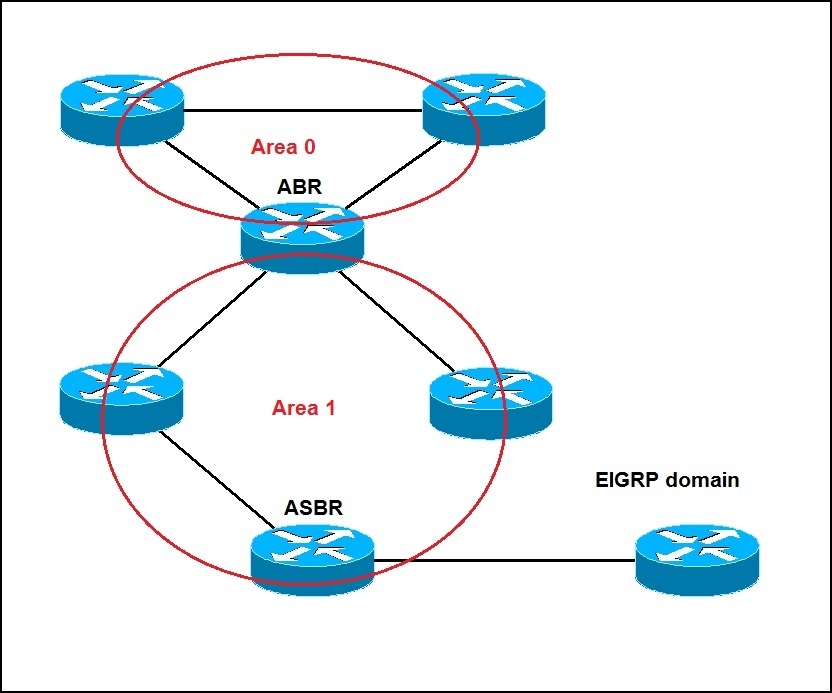OSPF areas explained
OSPF uses areas to simplify administration and optimize traffic and resource utilization. An area is simply a logical grouping of contiguous networks and routers. All routers in the same area have the same topology table and don’t know about routers in the other areas. The main benefits of using areas in an OSPF network are:
- the routing tables on the routers are reduced.
- less time is required to run the SFP algorithm, since routers need to recalculate their link-state database only when there’s a topology change within their own area.
- routing updates are reduced.
Each area in an OSPF network must be connected to the backbone area (also known as area 0). All routers inside an area must have the same area ID in order to become OSPF neighbors. A router that has interfaces in more than one area (area 0 and area 1, for example) is known as an Area Border Router (ABR). A router that connects an OSPF network to other routing domains (to an EIGRP network, for example) is called an Autonomous System Border Routers (ASBR).
Consider the following example to better understand the concept of areas:
All routers pictured above are running OSPF. You can see that one router is an ABR (Area Border Router) because it has interfaces in two areas, namely area 0 and area 1. One router is an ASBR (Autonomous System Border Routers), because it connects the OSFP network to another routing domain (an EIGRP domain in this case).




